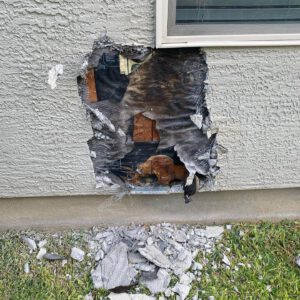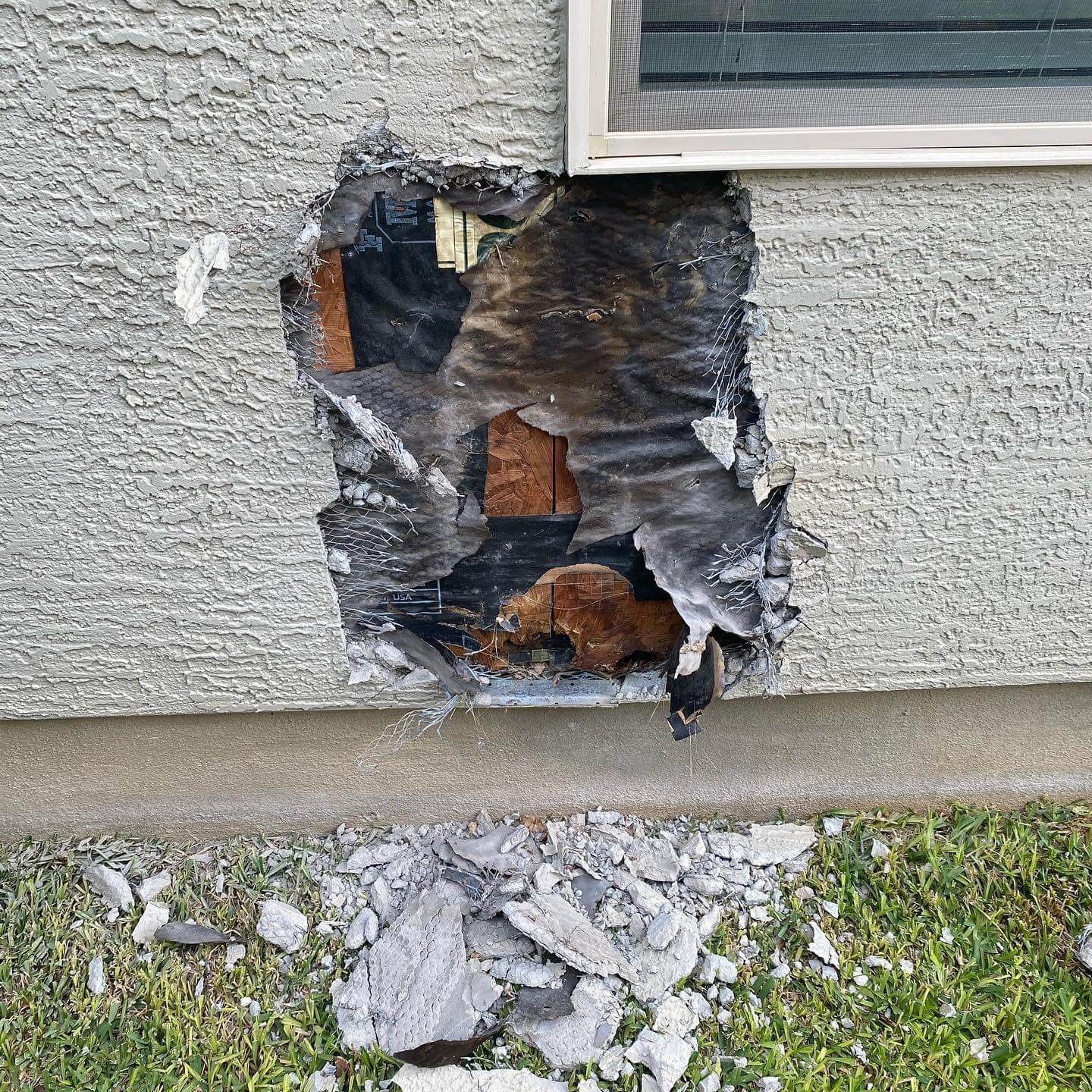Stucco Repair Philadelphia is a great way to improve your home’s curb appeal. However, some stucco damage requires more than just a simple caulking job to fix.
Look for warning signs like damp-looking stucco, dark spots, and cracking around windows. Also, watch out for gaps or cracks in the caulking.
If your stucco has hairline cracks, taking care of them as soon as you notice them is important. This prevents water from seeping into the walls and causing further damage to the structure of your house. You can use elastomeric caulking to fill these cracks. This product allows the crack to expand and contract with temperature changes without further damage to your stucco. Once the crack is filled, you can paint it to match the color of your home.
If you notice that your house has a pattern of diagonal or stair-step cracks, this is a sign of a serious problem and you should call in a structural engineer right away. This type of cracking usually results from the foundation shifting or settling. These issues can cause damage to the wall and framing of your home if left unattended.
Stucco spider cracking can also indicate that there is a problem with the lath in your walls. This is caused by moisture causing the OSB to shrink and expand. This can lead to a weak spot in the lath and eventually the entire wall.
In most cases, these types of cracks can be repaired by simply meshing the area and applying a skim coat. This can be done by a homeowner if the cracks are small enough. Larger cracks will require the use of a bonding agent to hold the new material in place.
If your stucco has small cracks that are not leaking, you may want to consider not patching these. The small cracks will not accept the material and will only detract from the overall look of your stucco.
Leaking
Stucco looks beautiful and makes a unique addition to any home. However, it can lead to expensive problems if not maintained properly. One such problem is water intrusion, which can cause mold and rot in your home. It’s important to look for signs of moisture intrusion in your stucco, and to take steps to fix any issues immediately.
The first sign of a potential problem is a crack in your stucco. Generally, this will be small, and often only a fraction of an inch wide. However, even a hairline crack can expose your walls to significant damage.
You can also check for a swollen area of your stucco, which is another sign of water intrusion. This is caused by a buildup of air bubbles that pushes against the surface, creating a space for water to enter.
If you have a large crack, it’s a good idea to hire a professional stucco contractor to troubleshoot. The contractor will be able to determine what the cause is, and recommend the best course of action.
Leaking around windows and doors is very common in homes with stucco. This is because the caulking used to seal these areas can become dry or shrink, and allow moisture to seep into your home.
During your inspection, it’s a good idea to look at your windows and doors to make sure the caulking is in good condition. You should also look for gaps in the window and door trim. These are all signs that you need to call a stucco repair company right away.
Once your stucco is repaired, it’s a good idea to inspect the work with a moisture meter. This will help you to confirm that the moisture is no longer present, and that the repairs were effective.
You should also re-inspect your stucco after a few years. This will help you to ensure that the repairs were effective, and that your stucco is protected against water intrusion. This is a key part of preserving the value of your home, and can prevent serious problems down the road.
Damaged Stucco
Stucco is a long-lasting material that can enhance the appearance of any home or building. But it’s a good idea to have your stucco inspected regularly so you can catch problems before they become structurally significant. Stucco is vulnerable to damage from a variety of sources including water, shifting soil, wrong mixing proportions, and poor workmanship. When these issues occur, they can cause cracks in the stucco that will compromise its strength and integrity.
Depending on the size and location of the cracks, it may be possible to repair them without having to replace the entire stucco layer. To do this, you will need to open up the damaged area to expose the wood lath and then clean and remove any obstructions like nails or screws that are protruding from the surface of the wall. Then, you will need to re-fasten the wood lath with new nails and apply a new coat of builder’s paper to the exposed face of the wood. Once this is done, you can use a hammer and chisel to remove any loose or crumbling sections of the stucco.
Moisture intrusion is another common issue that causes damage to stucco. This can be caused by environmental factors like rain or snow, but it could also be a sign of leaking interior plumbing. If you notice a persistent wet spot on your stucco walls, it’s a good idea to call in a professional for an inspection.
If your stucco has become stained, you will need to remove the damaged areas before applying a patch. This can be done by carefully using a hammer and chisel, being careful not to disrupt the surrounding areas that are still in good condition. Once the damaged areas are removed, you will need to re-clean the affected area and then apply a bonding agent. Next, you will need to re-apply the brown coat and then the final stucco mixture.
If the color of your stucco has changed over time, you will need to purchase coloring pigment that matches the original shade of the plaster. This should be mixed with a bit of water to make it easier to work with and then applied to the wall. Once it has dried, you can spray it with a water-resistant sealer.
Structural Issues
Stucco is relatively long-lasting and hardy compared to other siding materials, but it still is not designed to account for structural movement or the expansion and contraction of construction materials. That is why structural issues in stucco warrant immediate attention.
Large cracks in the stucco can cause a lot of damage in a very short period. If the cracks are not fixed right away, the problem will only get worse over time. The good news is that the most common cracking in stucco doesn’t indicate any significant problems and can often be repaired with a skim coat or repainting.
Hairline cracks are the most common type of crack in stucco walls. These are usually less than 1/8 of an inch wide and are a result of shrinkage in the wall structure. They are not a major issue, but they can be a source of water penetration and wood rot in the wall structure.
Spider Cracking is another type of crack in stucco that can also be caused by shrinkage and other installation problems. It resembles a spider web and can be caused by many different issues including foundation settlement, improper framing, and misalignment of the lath.
Vertical and stair-step cracks in stucco are more serious than hairline cracks because they indicate that the wall or building is experiencing substantial structural movement. This could be due to soil movement, foundation settlement or even seismic shifts in the home. If these types of cracks are present, a professional inspection is recommended to determine the cause and best solution.
If the cracks are causing a bulge in the stucco wall, it may be due to the weight of the wall crushing the studs behind the stucco. This can be a sign of termite infestation or an overly heavy stucco job that was not allowed to cure properly. If the bulge is accompanied by a hollow sound when you tap on the wall or if the corner of the wall has a noticeable “knock” to it, this is a sure sign that a structural problem must be addressed immediately.
